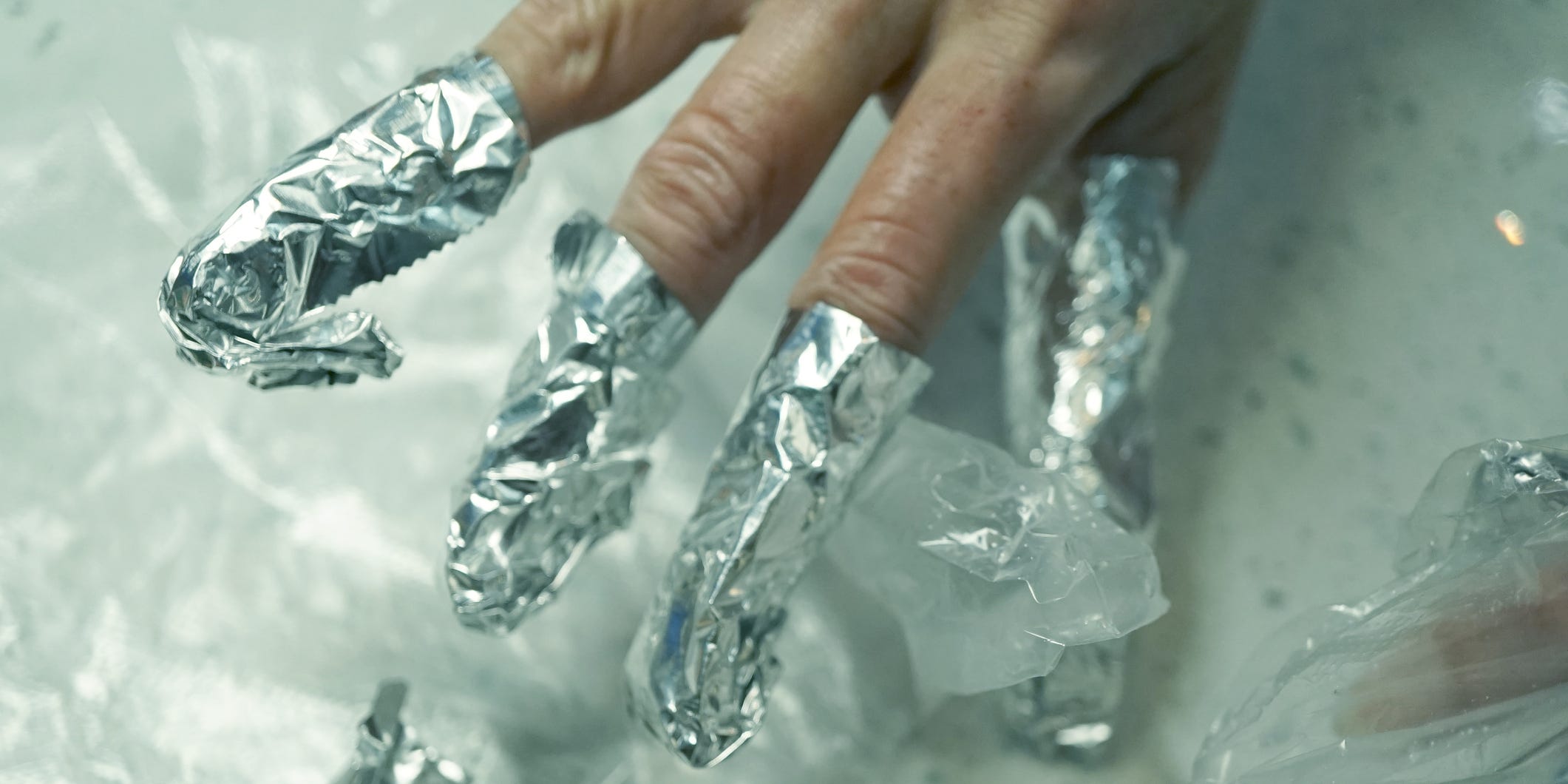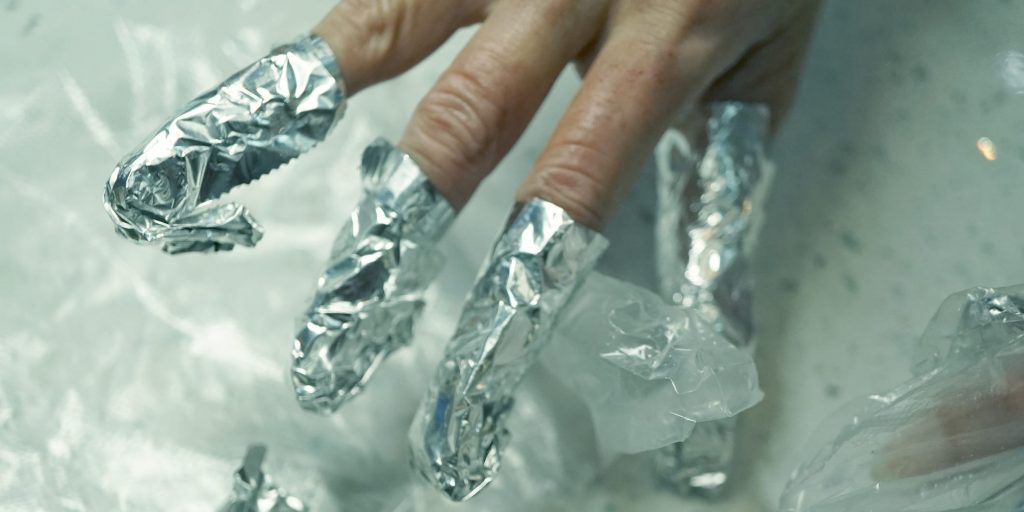
Kameleon007/Getty Images
- You can remove acrylic nails by filing them down and placing an acetone-soaked cotton ball on them.
- Then, wrap your fingers and the cotton ball in tinfoil and wait 10 minutes for them to loosen.
- Once the acrylic nail is loose, you can gently push it off with a tool called an orange stick.
- Visit Insider's Health Reference library for more advice.
While acrylic nails may look great, they can damage your natural nails if you don't remove them correctly.
Here's a guide for how to safely remove them and common mistakes people make that you can avoid.
How to take off acrylic nails
To cause the least damage to your nails, Hadley King, MD, a board-certified dermatologist in private practice, recommends patience as you go through the following steps:
- Cut the length of the acrylic nail down, leaving about two centimeters of the nail above your nail bed.
- Use a 100 grit file (which is more coarse than a typical nail file) to file off the top surface of the acrylic, leaving just a thin layer of the acrylic remaining.
- Soak a cotton ball in acetone and place it on top of the remaining acrylic, and wrap tightly in tin foil. Repeat for all nails. To speed up the process, place a hot towel on top of the foils. It's best to use cotton balls instead of soaking your nails in a bowl of acetone, which can dry out the surrounding skin.
- Applying gentle pressure, use an orange stick (a specific type of manicure tool) to gently push the rest of the acrylic off.
- Apply cuticle oil and hand cream to moisturize the area.
Are acrylic nails bad for your natural nails?
There's no question about it: Acrylic nails are not good for the health of your natural nails.
That's because, in order to apply the acrylics, you must first file down the surface of your nails which can cause them to become weak and brittle, King says.
Acrylics also come with the risk of damaging the skin around your nails, since the chemicals in the products used to apply acrylic nails may cause allergic contact dermatitis, a type of itchy skin rash caused by an irritant, says King.
Additionally, the cuticles are usually trimmed when acrylics are applied. Cuticles are meant to protect your nails and the surrounding skin from infection, says King. By trimming the cuticles, you make yourself more susceptible to infections.
A final concern is that ultraviolet (UV) lights are used for "curing," or hardening, acrylic nails. When exposed to UV radiation, you're at increased risk of photoaging and skin cancer. A 2013 study found that 10 minutes of exposure to these lamps expose your hands to the equivalent of UV radiation from a whole day outside. However, the study shows that more research needs to be done to assess the actual long-lasting damage caused by these types of lights.
In order to minimize the damage done to your nails, it's best to avoid acrylics altogether. But if they bring you too much joy for you to consider giving them up, King suggests saving them for special occasions. Alternatively, you can opt for gel nails instead of acrylics, which are slightly less damaging to the nails.
Insider's takeaway
Use caution when taking off your acrylic nails at home. As tempting as it may be to try to just rip them off, you should never do this.
Remember that acrylics are not good for your nail health, and it's best to only save them for special occasions if you want to take care of your natural nails.
